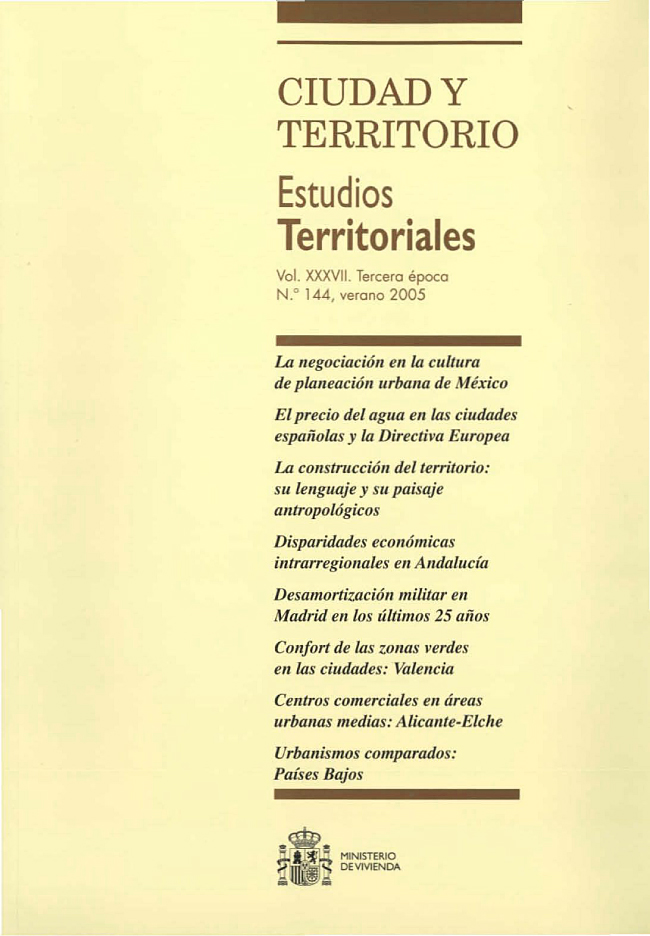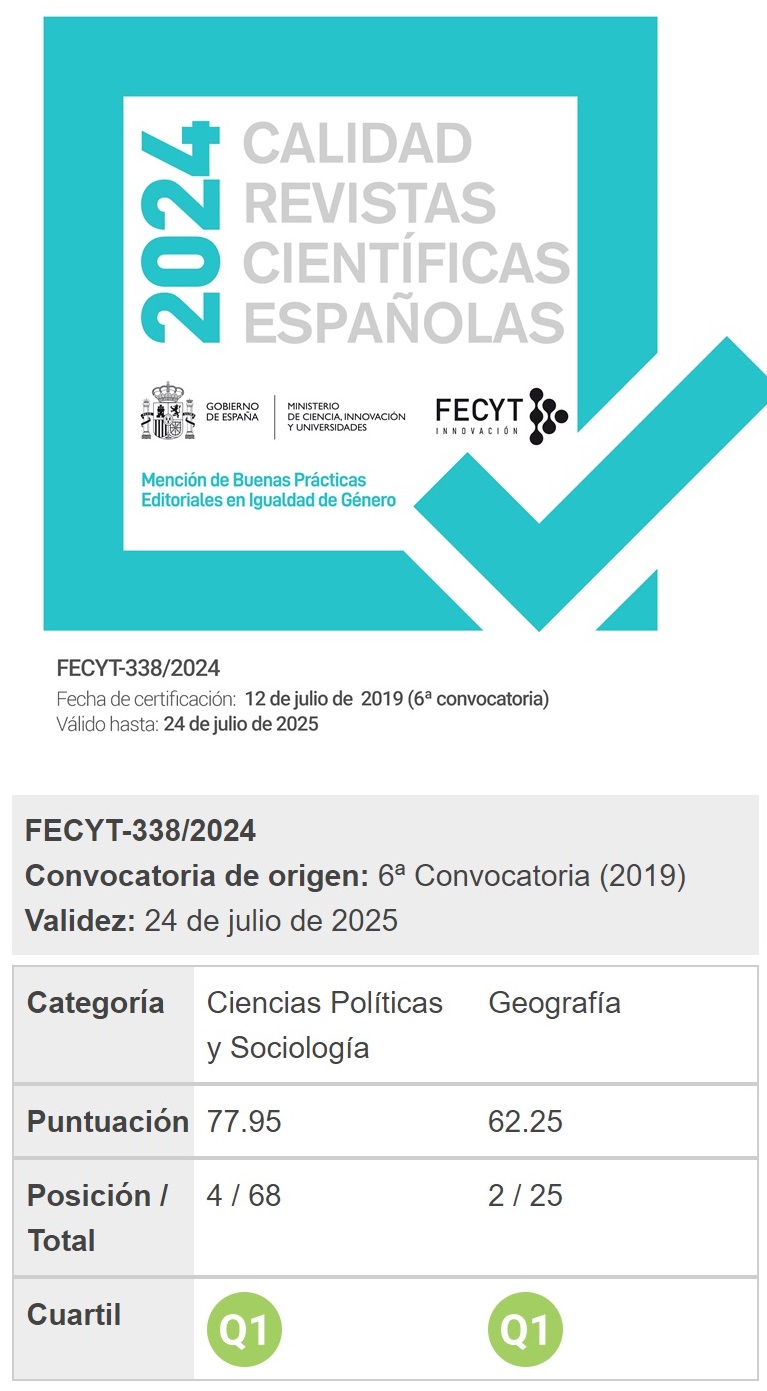El lenguaje de la construcción territorial
Palabras clave:
Corografía, dinámica espacialResumen
El mundo contemporáneo está marcado por el conflicto entre identidad territorial y globalización,
el Estado Autonómico, que intenta atenuar el conflicto, presenta la carencia de organizarse administrativamente
según el modelo de Estado Liberal que negaba validez a la diferenciación espacial. El territorio
se configura por estratificación histórica. Las técnicas básicas de elaboración espacial se basan en la
repetición. La repetición de células reticulares, el tejido de redes, constituyen la base de la organización espacial.
Se trata de dos redes complementarias, la red de caminos y la red de límites. Ambas redes corresponden
las actividades humanas básicas: la comunicación y el entendimiento. La estructura territorial puede
entenderse como un lenguaje que muestra ciertas similitudes con el lenguaje hablado. La concepción
histórica del territorio implica el protagonismo de la dimensión temporal como origen de cualificación espacial.
El devenir histórico supone un proceso continuo de cambio. Frente a la homogeneidad del espacio rural, la
ciudad medieval surge como espacio acotado frente al territorio La ciudad contemporánea se reintegra en
el territorio mediante el proceso metropolitano. La idea del territorio como sistema de alta complejidad cuestiona
la autonomía disciplinar y la organización administrativa sectorial.
Descargas
Descargas
Publicado
Cómo citar
Número
Sección
Licencia
Derechos de autor 2005 José Ramón Mendoza de Luarca Navia Osorio

Esta obra está bajo una licencia internacional Creative Commons Atribución-NoComercial-SinDerivadas 4.0.
Sin perjuicio de lo dispuesto en la legislación vigente sobre Propiedad Intelectual, y conforme a la misma, el/la los/las autor/a/es/as que publiquen en CyTET cede/n a título gratuito, de modo no exclusivo y sin límite temporal al Ministerio de Transportes, Movilidad y Agenda Urbana los derechos para difundir, reproducir, comunicar y distribuir en cualquier formato actual o futuro, en papel o electrónico, la versión original o derivada de su obra bajo licencia de Creative Commons Reconocimiento-NoComercial-SinObraDerivada 4.0 Internacional (CC BY-NC-ND 4.0), así como para incluir o ceder a terceros la inclusión de su contenido en índices, repositorios y bases de datos nacionales e internacionales, con referencia y reconocimiento en todo caso de la autoría del mismo.
Además, al realizar el envío, el/la los/las autor/a/es/as declara/n que se trata de un trabajo original en el que se reconocen las fuentes que han sido utilizadas en su estudio, comprometiéndose a respetar la evidencia científica y a no modificar los datos originales para verificar o refutar una hipótesis de partida; que el contenido esencial del mismo no ha sido publicado previamente ni se publicará en ninguna otra obra o revista mientras esté en proceso de evaluación en la revista CyTET; y que no se ha remitido simultáneamente a otra publicación.
Los autores deben firmar un Formulario de Cesión de Derechos, que les será enviado desde la Secretaría de CyTET una vez se acepte su artículo para ser publicado.
Con el objetivo de favorecer la difusión del conocimiento, CyTET se adhiere al movimiento de revistas de Open Access (OA) y entrega la totalidad de sus contenidos a diversos índices, repositorios y bases de datos nacionales e internacionales bajo este protocolo; por tanto, la remisión de un trabajo para ser publicado en la revista presupone la aceptación explícita por parte del autor/a de este método de distribución.
Se anima a las/os autoras/es a reproducir y alojar sus trabajos publicados en CyTET en repositorios institucionales, páginas web, etc. con la intención de contribuir a la mejora de la transferencia del conocimiento y de la citación de dichos trabajos.








 Enlace a CyTET en Linkedin
Enlace a CyTET en Linkedin